Mitsubishi’s Twin Motor S-AWC Makes Driving on Ice Boring
For a good engineer, twin motor is better than mechanical. The mechanical AWD system automatically distributes torque. With electric, the engineers have to work more to make the system work together.
That’s what Mitsubishi's Kaoru Sawase told me, talking about the company’s latest AWD system. They’re bold words, but he's the engineer who designed the first torque vectoring differential as well as the AWD system on every one of the ultra-cool Mitsubishi Evolution rally specials. He developed an electronic center differential for the automaker even before that and has overseen Super All-Wheel Control (S-AWC) since before it was Super.
In short, Sawase knows a thing or two about AWD. I'm with him on the frozen surface of ICAR at Montreal's Mirabel airport to find out how his AWD system puts its money where its mouth is.
Ice? Ice, Baby.
The surface at ICAR isn't glare ice. Instead, it's thick ice that gets roughed up by a tractor before we start driving for the day. The tractor’s machining leaves some snow on top, a thin layer that takes a bit of driving to start to melt and turn shiny again. It's still plenty slick, but it's more like an actual winter road surface than a skating rink.
I'm used to winter driving. Growing up in rural New Brunswick, there was no other choice. I got my license on a snow day and never looked back. From my first spin around the skidpad circle, S-AWC's added control was obvious. Driving the Outlander PHEV required me to forget almost every winter habit I had spent the last 20 years learning.
I had to forget about slick-surface driving because Outlander's S-AWC system didn't need me to do anything beyond drive like I was on pavement. There was no feathering the gas, no sawing at the wheel. The Outlander just went around the circle until I eventually went faster than physics and tire traction allowed.
Yaw Control Makes it Yawn Control
Even a big bump on one of the two circles couldn't upset the Outlander PHEV. Concentrating hard, I could feel the system shift power from front to back, but also left and right. Any AWD system can move power front to back, but it was that side-to-side movement, combined with excellent brake control of yaw, that made it so good.
If I started to push the nose, the Outlander PHEV's S-AWC system would take some torque from the front and add some to the outside rear. The effect was to tuck the nose back in. If I pushed a bit harder, S-AWC would add some inside rear brake as well. The effect was impressive stability until I pushed it too hard, where the laws of physics said there was nothing more the tires could give.
Switching from Normal to Snow mode exaggerated the effect. The system knew it would have less total traction, so it made changes to compensate. Because it knew it wasn't on dry pavement, the brake action and torque adjustments were smoother. The system allowed a bit more wheelspin under hard acceleration, too, because that performs better on snow.
Mitsubishi Simulates the Other Guys
To help really make its system look good, Mitsubishi had a special drive mode set up for our day. This one turned off all of the S-AWC system's best features. It also sent torque only to the front tires until they started to spin.
The idea was that when set to this mode, the Outlander would behave like most of its competitors. Turn too hard into an icy corner, and the front would push wide toward the edge of the roadway. There was no power adjustment and no extra braking to help bring it back, so as the driver, I had to lift, steer, and hope for the best.
In this mode, acceleration was jerky in two dimensions. As the fronts slipped and torque was added in the rear, the front and back end of the vehicle would slide side to side. Even on the move, the vehicle would dive left and right almost constantly. Both as the tires lost and regained traction and as small piles of snow on the surface would slow the vehicle.
Of course I'm thinking that Mitsubishi's engineers set up this mode to make the Outlander PHEV look good. But it did accurately represent competitor AWD systems.
How Most AWD Systems Give Power Without Control
AWD systems on just about every vehicle with a gas engine work the same way. A part called the center differential splits the engine's torque between the front and rear axles. Like the differential on the axles, it lets the front and rear wheels spin at different speeds, so you can do things like go around corners.
Most center differentials have clutches inside. When the clutch pack is disengaged, which it is most of the time, all of the power is sent to one axle. Usually, the front. When those driven tires start spinning more quickly than the non-driven ones, the uneven forces cause the clutches to engage, and torque is sent to the non-spinning axle. That turns those tires, and suddenly, you're not stuck anymore.
The clutches can be automatic, acting purely from internal speed differences. They can also be electronically controlled, where a computer tells hydraulic pumps when to engage and disengage to transfer torque to get you moving.
With both designs, there's little to adjust. The center differentials are normally sourced from one of a few suppliers, the clutches and pressures can be changed, and that's it. Once it's set, it's set. That's why Sawase said, "In the case of a bad engineer, maybe the mechanical system is better than electrical." There are fewer components they can adjust to make better, but also far fewer they can tweak and inadvertently make worse.
What Puts the Super in Super All-Wheel Control
Mitsubishi’s S-AWC is more than just an AWD system. It combines the vehicle's AWD system - torque distribution front to rear - with lateral torque vectoring called Active Yaw Control and adds the ABS and stability control systems. They're all linked, so they act together. Not just when there's a traction problem but to help improve the vehicle in a wide range of situations.
Mitsubishi's conventional vehicles use an electronically controlled center differential and hydraulic clutches to adjust torque distribution from front to rear. The Outlander PHEV's twin-motor system uses only two electric motors.
A typical center differential is very limited in how much torque it can send to the axle that isn't normally driven. It's even more limited in how little it can send to the one that's slipping. Electric motors don't have that issue.
Using two electric motors means complete independence when it comes to power transfer. The computer can decide to send all 134 of the rear motor’s horses to the ground and zero to the front. Or all 113 of the front motor's to the ground and zero at the rear. The adjustment is limited only by the maximum output of each motor. Thanks to regenerative braking, the minimum output is actually less than zero.
The system has more precise and immediate control over torque output. It can react more quickly and with more authority.
Sawase says, "This is a big advantage to control freedom. So [for] the very deep-thinking engineer, [who can] make a good control strategy, twin-motor is better than a mechanical system."
Which all sounds great when you're watching PowerPoint slides. It's only when the 2023 Mitsubishi Outlander PHEV I'm driving starts to actually slide that it all begins to make sense.
Checking Mitsu’s Work at Home
I tried a similar test with some other AWD vehicles at home to find out. I tried a Subaru Crosstrek Wilderness and a Hyundai Kona on some frozen closed courses of my own to check Mitu's claims.
In short, Mitsubishi was bang on.
With both of those AWD models, I experienced exactly the same pushing of the front end as I reached the limits of traction, muck like in Mitu’s simulation. There was no yaw control to help tuck the nose back in other than my sawing at the wheel and lifting off of the gas. Trying to kick out the tail in either model to regain control was thwarted by ham-fisted stability control systems that cut power and braked hard, in complete contrast to the Outlander's smooth behaviour.
Where the Outlander PHEV accelerated smoothly in a straight line, both other models dove side to side as the tires and AWD system scrambled for traction. Outlander PHEV's active yaw control helps stop the left-right movement - it can do the same in cross winds- and the twin motor system acts so quickly to shift torque that it's all but imperceptible.
One-Pedal Driving Makes Slippery Even Smoother
Innovative pedal, Mitsubishi’s one-pedal drive mode, is also integrated into S-AWC. The system can brake at up to 0.2G using regenerative braking from the electric motors. That helps you stop, but it also helps the S-AWC system function better.
S-AWC needs you to be doing something for it to work its best. Either applying throttle so it can re-route torque or braking so it can adjust the braking force. With Innovative Pedal, the system is applying torque whenever you push the pedal harder and braking whenever you ease up.
Drop the pedal quickly and the system brakes harder. That helps pull the nose back in when you’re sliding. It can also be used to help you have a little more fun than the engineers might have wanted you to.
I found the fun button in the slalom course we had set up for the afternoon. Picking Mud on the terrain modes loosened up the reins. Lifting completely off of the accelerator and then turning the nose in sharply would take advantage of the mud mode to bring the rear around.
Not far, and nothing un-recoverable. But just enough to let you have a little bit of rotation and some more fun. To show that the Outlander PHEV could be playful, and not just follow the road rigidly.
The Outlander PHEV’s S-AWC system made it easier to drive on ice and snow. It also made it more comfortable to drive in high winds. While we didn’t test in wet weather, the system should be able to perform equally adeptly in those conditions. The system was developed to make rally cars go faster in the dirt, but the same solid engineering makes slower drives easier too.
Become an AutoGuide insider. Get the latest from the automotive world first by subscribing to our newsletter here.
Evan moved from engineering to automotive journalism 10 years ago (it turns out cars are more interesting than fibreglass pipes), but has been following the auto industry for his entire life. Evan is an award-winning automotive writer and photographer and is the current President of the Automobile Journalists Association of Canada. You'll find him behind his keyboard, behind the wheel, or complaining that tiny sports cars are too small for his XXXL frame.
More by Evan Williams





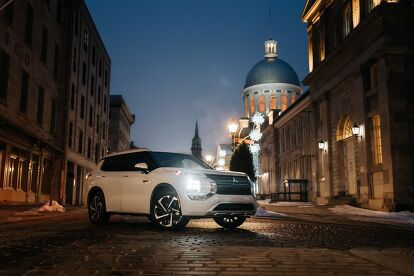

























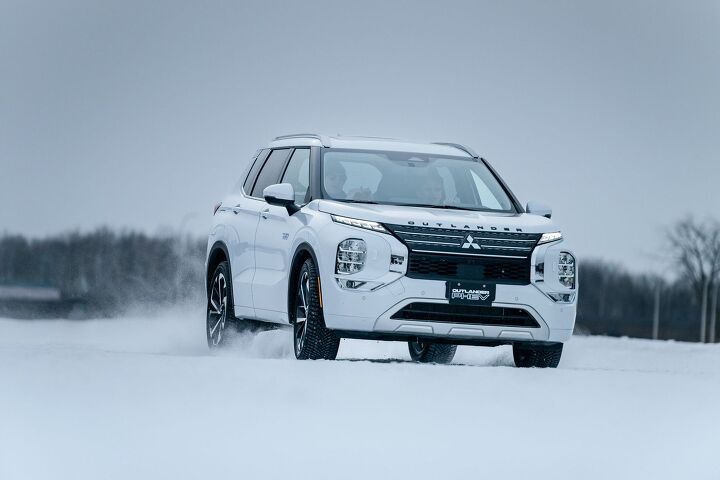




























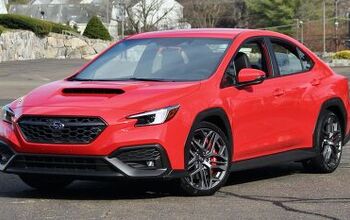
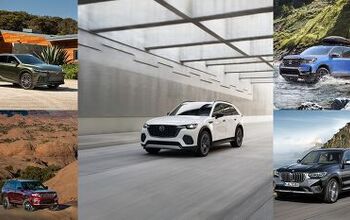

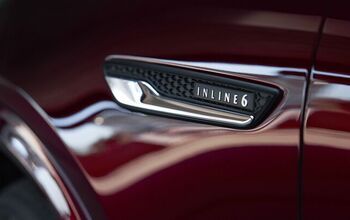






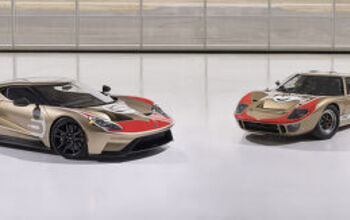
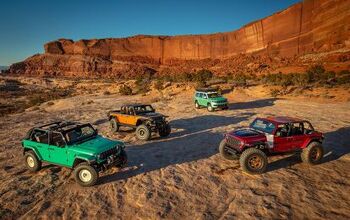
Comments
Join the conversation
It also sent torque only to the front tires until they started to spin.
The idea was that when set to this mode, the Outlander would behave like most of its competitors,
Shouldn't Mitsuibishi's competitors be other $WD/AWd vehicles rather than just 2wd?
or would that not be a fair comparison? cause i think mitsu makes 2wd vehicles too right?